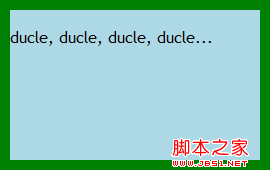
In the first two lectures, I told you how to make characters move, so today we will take a look at how to implement dialogues imitating the characters in "The Legend of Cao Cao" in "Three Kingdoms". I've written the specific link below.
1. Foreword
I believe everyone still remembers that in some news, there will be some terrible results, using a typewriter-like method to produce text. So the main purpose of today is to do this.
On September 5th, I came up with the idea of doing this kind of procedure in the office and had some ideas. First of all, I wanted to use the method of adjusting margin. It is reasonable to say that it was done, but it was very unsatisfactory. After all, it was very troublesome and the technology was poor. So I'm going to use arrays and loops. I took the time to write it on September 13th, but because I have been very busy these days, it is basically impossible to take care of my blog during working days, so I didn’t have time to share it with you. It is the weekend now, so I will share my experience with you. Hope we can make progress together.
2. Code explanation
First let’s look at the code:
Code download address
3. Demonstration effect
The first is:

Then:

Finally:

Demo address:
4. Postscript
Hard work pays off. I think game design is not difficult. As long as you work hard and work hard, you can succeed. If there are any good technologies in the future, I will share them with you immediately. Recently, I have sorted out the technologies I have talked about before and made a small demo. I hope you all like it. The download and trial play of the demo will be announced soon, and it is still under testing. In addition, game development and game engines are crucial. I plan to develop my own engine myself, which will make it easier to design games.
Thank you for your support!
 Unable to locate program input point in dynamic link library
Unable to locate program input point in dynamic link library
 ps curve shortcut key
ps curve shortcut key
 The difference between injective and surjective
The difference between injective and surjective
 vue references js files
vue references js files
 What should I do if eDonkey Search cannot connect to the server?
What should I do if eDonkey Search cannot connect to the server?
 Can data between Hongmeng system and Android system be interoperable?
Can data between Hongmeng system and Android system be interoperable?
 Why can't Amazon open
Why can't Amazon open
 What is the mobile service password?
What is the mobile service password?




